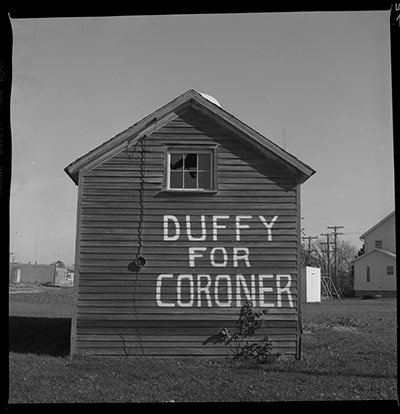
Blog Author David Gremp
I know it’s a discomforting thought, but we’re all going to die eventually. The good news is, if you’re reading this, you’ve still got time to consider “What’s going to happen to my images after I’m gone?” Who will look over them? Or, who will overlook them completely and ask “How much do you think Uncle Rick’s camera equipment is worth?” (Not much in my case!) Now is a good time to ask yourself who do you trust to consider the value of your images, or who at least knows enough about the work you’ve done and understands what you value most and least—what should be saved and what should be pitched?
In my case, having come into photography in the film era with a “formal” education that required mounted print portfolios for each and every class, those mats and supports were the first to go. I had lugged them through two moves and, by eliminating all that excess bulk and weight, I managed to cut the size of my print portfolio boxes by less than half.
Negatives take up comparatively so little space that I’ve always found it hard, if not impossible, to throw away a single negative. That said, I’m the only one who knows what negatives are important to me and where they are.
The simple solution is to go through each and every negative, slide and electronic file, select the most important ones, scan them and put them into easily identifiable folders (i.e. projects, years, decades, etc.). I made both high-resolution TIFFs and low-resolution JPEGs so that they could be either printed or shared easily. And, of course, you could also back up each at least twice on other drives or servers, depending on how paranoid you are.
Next, go through those files and your physical archives with someone you trust, someone who understands the importance of your work to you. Put it in writing, put it in your will and put it in a safe deposit box, if you feel the need. For those of you who have significant print portfolios, you may want to go through them, make sure they’re organized and try to eliminate any weak or redundant prints. You don’t want to leave behind any bigger burden for someone else to deal with than you have to. That wouldn’t be fair.
One of the reasons that I’ve been thinking about this lately, other than my impending 68th birthday later this month, is that I was recently asked by a former photo professor (who shall remain nameless) to be the executor of his “photo collection” in the event of his and his wife’s deaths. He is 80 years old, but his wife is closer to my age, so the task for me may never come to pass.
Anyway, in order for me to gain a fuller understanding of what his “collection” includes, I visited him and his wife for three days earlier this month and went through EVERYTHING with them. As I already knew, it was by no means your average collection or archives. In addition to his own prolific, 60-year career as a photographer, he was also an ardent, if not obsessive collector of old photographs of every conceivable commercial process—daguerreotypes (over 1,000!), ambrotypes and tintypes, salt and albumen prints, carte de visites, cabinet cards, stereo cards and lantern slides, large format panoramics, etc. etc. He even has a separate collection of post mortem images. Need I mention over 100 framed, Victorian hair wreaths?
While many of the individual images are unique and valuable, there is also the question of “legacy” and the possible benefit (if not value) of keeping the collection together in his name for trying to sell it to a photo-historical institution, museum or corporate collection. To sell hundreds of thousands of images/objects individually on eBay, craigslist or even at photo-print fairs would take . . . as long as it took him to collect them! We all agreed that there was no simple, logical solution, but at least a discussion was started and opinions were shared.
His personal work presented its own dilemma. While he never achieved rock-star status in the gallery or museum world, he has always been highly regarded for his imaginative, creative and high quality output, and his work is in some very important collections and galleries. That said, he was, to a point of fault, overly optimistic in his “editions,” print and portfolio runs, self-publications, etc., producing literally TONS of boxes, stacks and rooms filled floor-to-ceiling! And while he has always been a very organized and meticulous “pack rat,” with every box clearly labeled and stored in logical order, the shear volume of his collection is mind numbing and more than a bit overwhelming. BUT, at least he’s started the process. He’s brought in people he respects, who understand the potential value of his collection and who also understand how much it means to him.
As a side note to my visit, I noticed that his collection contained a small, but complete archives of another photographer (much lesser known and probably, in the grand scheme of things, insignificant) and several thousand paintings, prints and sculptures by an unknown, untrained “primitive” artist. When I asked why he had purchased them at auctions, he looked me in the eyes and said, straight-faced, “To save it from the landfill. A person’s life work deserves better than that.” Food for thought from a wise man.
So, it’s never too early to get your ducks in a row and make sure you’ve shared your feelings about your own “legacy” with someone else that you know and trust.